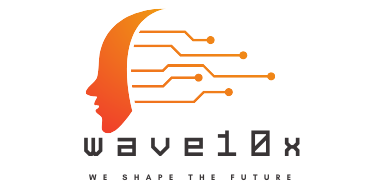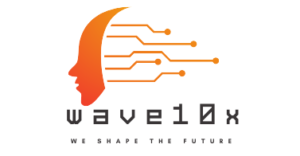EEG Machine: Revolutionizing Brain Monitoring in Healthcare
Welcome to our blog post, where we explore the fascinating world of EEG (Electroencephalogram) machines and how they have revolutionized brain monitoring in healthcare. Whether you are new to this concept or already familiar with EEG technology, this post will provide you with comprehensive insights and useful information. So let’s dive in!
Introduction: Unleashing the Power of EEG Machines
EEG machines are devices used in medical settings to record and measure the electrical activity of the brain. By placing electrodes on a patient’s scalp, these machines can detect and monitor brainwave patterns, enabling healthcare professionals to gain valuable insights into brain function and diagnose neurological conditions.
In this blog post, we will explore the benefits of EEG machines, their applications in healthcare, advancements in technology, and the future possibilities they hold for brain monitoring. Whether you are a healthcare professional looking to expand your knowledge or simply curious about the incredible capabilities of EEG machines, this post is for you.
The Science Behind EEG Machines
To truly appreciate the power of EEG machines, it’s important to understand the science behind them. The human brain consists of billions of neurons that interact with each other through electrical impulses. These electrical signals create brainwave patterns that can be detected by sensitive electrodes placed on the scalp.
Electrodes in an EEG machine detect these electrical impulses and convert them into measurable brainwave patterns. The resulting data, known as an electroencephalogram or EEG, provides critical insights into brain function, sleep patterns, seizure activity, and more.
Applications of EEG Machines in Healthcare
The versatility of EEG machines has led to their widespread use in various medical applications. Let’s explore some of the key areas where EEG machines have made a significant impact:
1. Epilepsy Diagnosis and Monitoring
Epilepsy is a neurological condition characterized by recurrent seizures. EEG machines play a central role in the diagnosis and monitoring of epilepsy patients. During an EEG test, healthcare professionals can identify abnormal electrical activity in the brain that is indicative of a seizure. This helps in confirming the diagnosis, determining the type of epilepsy, and guiding treatment options.
2. Sleep Disorders Assessment
Sleep disorders, such as sleep apnea and insomnia, can significantly impact an individual’s overall health and well-being. EEG machines provide valuable information about a patient’s sleep architecture, including sleep stages, brain wave patterns, and disruptions. By analyzing this data, healthcare professionals can diagnose sleep disorders and develop personalized treatment plans.
3. Brain Research and Neurology Studies
EEG machines have played a pivotal role in advancing our understanding of the brain and its various functions. Researchers utilize EEG technology to study cognitive processes, brain activity during different tasks, and responses to stimuli. This valuable data helps in unlocking the mysteries of the human brain and developing innovative treatments for neurological conditions.
4. Monitoring Anesthesia and Coma Patients
During surgery, EEG machines help anesthesiologists monitor the depth of anesthesia and ensure patient safety. By analyzing the brainwave patterns, healthcare professionals can adjust the anesthesia levels to ensure optimal conditions for the patient. EEG machines are also used in intensive care units to monitor coma patients and assess their brain function.
5. Assessing Brain Injuries and Stroke
Brain injuries and strokes can have severe implications on a patient’s life. EEG machines assist in the evaluation and management of these conditions. By analyzing the electrical activity of the brain, healthcare professionals can assess the severity of the injury or stroke, understand the extent of damage, and develop personalized rehabilitation plans.
Advancements in EEG Technology
Over the years, EEG technology has witnessed remarkable advancements, enhancing its capabilities and expanding its potential applications. Let’s take a look at some of these notable developments:
1. Wireless EEG Systems
Traditionally, EEG machines were known for their cumbersome setup and numerous wires attached to the patient’s scalp. However, with wireless EEG systems, the procedure has become more streamlined and patient-friendly. These systems eliminate the need for extensive wiring, allowing patients to move freely during the test, enhancing comfort and reducing anxiety.
2. Portable and Home-Based EEG
The introduction of portable and home-based EEG devices has brought tremendous convenience and accessibility to patients requiring long-term monitoring. These devices are compact, user-friendly, and allow patients to perform EEG tests in the comfort of their homes. Healthcare professionals can remotely monitor the data, enabling more efficient and timely diagnoses.
3. High-Density EEG
High-density EEG systems utilize a larger number of electrodes, resulting in more precise and detailed brain activity measurements. The increased electrode density allows for the visualization of brain activity in specific regions with greater accuracy. This advancement has significantly contributed to brain mapping studies and identifying localized abnormalities in neurological disorders.
4. EEG and Functional MRI Integration
The integration of EEG with functional MRI (fMRI) has revolutionized brain imaging and analysis. This combination enables simultaneous measurement of electrical and blood flow activity in the brain, providing comprehensive insights into brain function. The fusion of EEG and fMRI data helps researchers correlate brainwave patterns with specific brain regions, enhancing our understanding of brain disorders.
Future Possibilities and Promising Research
The field of EEG technology continues to evolve rapidly, paving the way for exciting possibilities in brain monitoring and healthcare. Here are some noteworthy areas of ongoing research and development:
1. Brain-Computer Interfaces (BCIs)
BCIs hold immense potential for individuals with severe disabilities, allowing them to communicate and interact with the world using only their thoughts. EEG technology plays a crucial role in BCIs by decoding brainwave patterns and translating them into meaningful commands. With further advancements, BCIs may transform the lives of individuals with paralysis, locked-in syndrome, and other motor impairments.
2. Real-time Monitoring and Intervention
Imagine a future where EEG machines can not only monitor brain activity but also intervene in real-time. Researchers are exploring the development of closed-loop systems that can detect abnormal brain patterns and deliver interventions, such as electrical stimulation or drug delivery, to modulate brain activity. This could revolutionize the treatment of epilepsy, depression, and other neurological conditions.
3. Artificial Intelligence in EEG Analysis
Artificial intelligence (AI) algorithms are increasingly being employed to analyze EEG data and extract meaningful information. By leveraging AI, healthcare professionals can improve the accuracy and efficiency of EEG interpretation, leading to faster diagnoses and more effective treatment planning. AI-powered EEG analysis may also enable the detection of subtle abnormalities that might otherwise go unnoticed.
Conclusion: Harnessing the Power of EEG Machines
In conclusion, EEG machines have undoubtedly transformed brain monitoring in healthcare. From diagnosing epilepsy to unraveling the mysteries of the human brain, these devices have revolutionized the way we understand and treat neurological conditions. With advancements in technology and ongoing research, the future of EEG machines holds even greater promise in enabling personalized medicine and improving patient outcomes.
As a healthcare professional, it is vital to stay updated with the latest developments in EEG technology, attend relevant conferences, and engage with experts in the field. By harnessing the power of EEG machines, we can better serve our patients, unravel the complexities of the human brain, and push the boundaries of medical knowledge and innovation.



